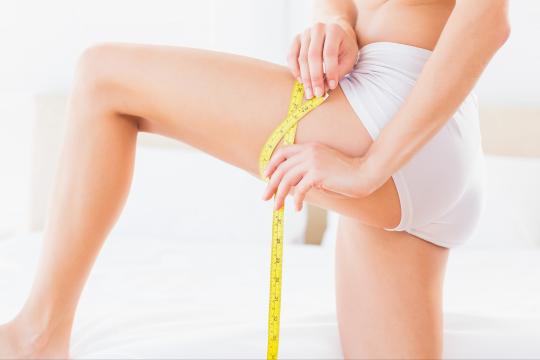
As miraculous as a tummy tuck seems, there is one simple truth: the one person that stands between you and a successful procedure… is you. By failing to follow your surgeon’s pre- and post-tummy tuck instructions, you can quickly set yourself up for failure or even a second corrective surgery. So let’s avoid that, and take a look at some pre- and post-surgical steps you may be asked to take when undergoing an abdominoplasty. It takes a village, and with a tummy tuck that village will be populated by you and your board-certified plastic surgeon. (And one really, really, really good friend—keep reading.)
Diet.
A normal, healthy diet is typically recommended pre- and post-surgery, and if you’re thinking of trying to lose weight prior to surgery, let’s just nip that in the bud right now. Board-certified plastic surgeon, Dr. Antonio Gayoso advises, “There should not be any significant attempts to lose weight immediately before surgery.” And don’t forget to tell your surgeon about any medications or over-the-counter supplements you may take as some can act as blood thinners. Maintaining a healthy diet pre- and post-surgery will help ensure a good result. It will also help with the next glamorous business at hand: constipation.
Avoid constipation.
What goes in must come out, except when it doesn’t. It’s important to stay regular after your tummy tuck procedure. Use of an over-the-counter stool softener both pre- and post-surgery can be advised to help combat any constipation issues caused by strong pain-medication.
Do what you can to avoid infections.
One item you won’t necessarily be pining for is an infection. While all surgeries involve a level of risk, and some surgical infections are simply unavoidable (sneaky buggers), it’s important to play your part in lessening the risk by following your surgeon’s advice. Ask questions and adhere to any suggestions made by your doctor (How do I clean my incision site? Are there any cosmetic products I should avoid? Etc...)
Expectation management.
It’s tempting to leap into self-improvement and assume the net will appear, but a surgical procedure is going to require a some self-examination, particularly in regards to your expectations. There are questions you will need to ask of yourself and ask of your surgeon to ensure that you’re a good candidate and that you’re aware of all all of the ins and outs of the procedure. “I think expectation management is a great tool for helping patients recover from abdominoplasty,” explains Dr. Gayoso. “I show my patients before and after pictures of [the procedure] so they can see the changes that it produces; but I also explain that it will cost weeks of difficult recovery and a few months of restrictions of activity. Knowing this in advance automatically primes them for a smoother recovery.”
Let’s dive further into managing this aforementioned “difficult recovery,” shall we?
Pain:
Inexplicably housed in both the “things to avoid” dept. and the “things to expect” dept.; pain after an abdominoplasty is unavoidable. Post-surgical tummy tuck pain is caused by the tightening of the abdominal musculature, and can also be due to the one-two combo of liposuction at the sides of the waistline and on the back that is commonly used in an abdominoplasty.
“Patients will typically have pain in the front and in the back of their torso, which makes it difficult to get comfortable,” explains Dr. Gayoso. “This pain and tenderness will last at least a couple of weeks, although in the second and third week it is significantly more manageable. I tell my patients that as long as they have tenderness and some pain they’re probably going to reduce in size further.” Full resolution of swelling and tightness from an abdominoplasty can take up to a few months. So there… we’ve managed that expectation for you. You’re welcome.
Mobility:
I hope you have good friends, ‘cause you’re going to have to elicit the help of someone who really, really, really likes you for the first few days after surgery. You’ll need help getting up from laying down and vice versa—and you’ll need help getting to the toilet and getting up from the toilet. What?! Yes. On the bright side, it’s a great way to test the boundaries of your friendships. On the not so bright side: you’ll need help getting up from the toilet. Go ahead and take a moment. Let that sink in. We’ll wait.
Another gem is that you won’t be able to walk very quickly or easily without pain, but you’ll also need to walk to prevent the possibility of blood clots. “Patients will need to shuffle at first, as mobility is significantly decreased,” Dr. Gayoso explains. “Despite this, we ask patients to pump their legs and walk as many times during the day as possible to prevent any blood clot formation.”
Restricting activities:
It’s obvious that if you’re going to have issues with simple mobility post-surgery, you’ll likely need to restrict your activities too. That means any activity that puts you at risk of damaging the muscle tightening sutures in place after surgery—which can cause a bulge in the abdomen—are a big no-no. No CrossFit, no weightlifting, no running, no Boot Camp, no yoga, no calisthenics… just no. If you have to ask. The answer is no. “[Patients] may walk as much as they feel comfortable with and they may climb stairs.” says Dr. Gayoso. “I ask them to refrain from strenuous activities for a total of three months so as to preserve the internal corset-like effect of the operation.”
And since some holiday is always right around the corner, let’s tie in this little gift: no mixing alcohol, recreational or prescription drugs with the strong pain medication you’ll be prescribed post-surgery. In conclusion: no.
Work:
What you can probably do, is go back to work in a week or two. “More often than not, patients can return to work after just one week, but in some cases additional time may be required,” says Dr. Gayoso. “I advise my patients that they may not feel like returning to work after one week, but they will be able to. Two weeks is a nicer amount of time and three weeks would be a luxury. A lot depends on the type of work they do and what type of transportation they require to get to work.” Why? Because driving and strong pain medication aren’t a good mix either.
Deciding on a tummy tuck is no small decision, and it’s important to understand that nothing is a passive choice. Your doctor can do their job, but you’ll also have to do yours too. Truth.







